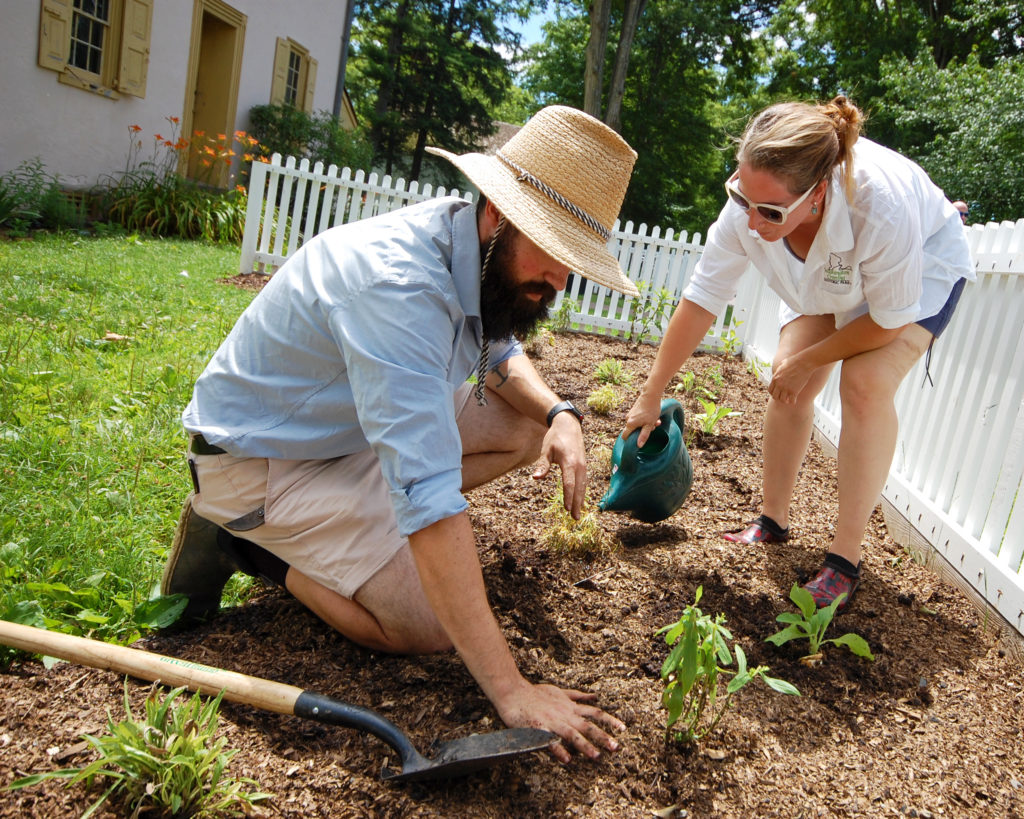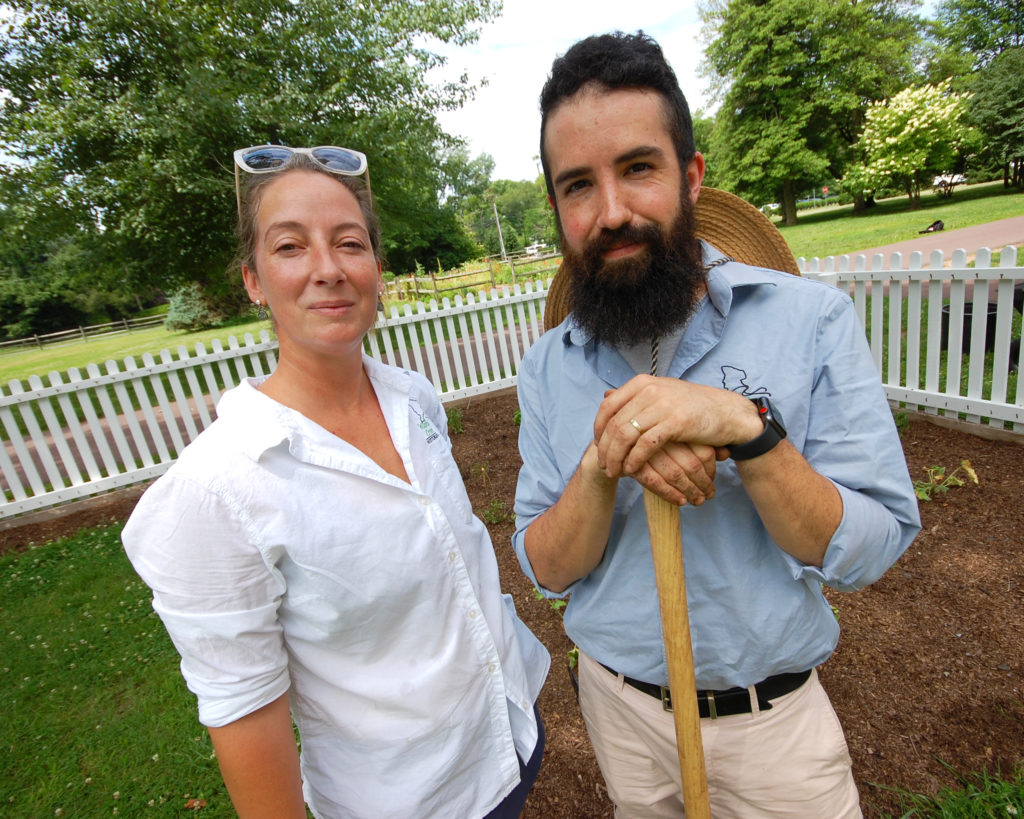
If you’ve visited the Historic Village in the last two months, you’ve probably noticed the fencing and new beds around the Hibbs House. It’s the makings of Washington Crossing Historic Park’s third—and, when it’s done, most robust—historically accurate garden.
“The Hibbs House garden will offer lots of new educational opportunities centered on the role of kitchen gardens during the late 18th century,” says Jennifer Martin, Executive Director of the Friends of Washington Crossing Park. “We’re envisioning lectures, scout programs, hands-on history classes, and field trips. It’s also going to enhance the experience for visitors who would prefer to tour the Historic Village on their own.”
The Hibbs House garden complements the park’s two other historically accurate gardens: the Thompson-Neely House and Farmstead garden that grows ornamental plants, vegetables, and culinary and medicinal herbs, and the garden across the path from the Hibbs House, which offers vegetables and culinary and medicinal herbs.
Over the course of the next two years, the Hibbs House garden will grow to encompass several hundred different species of plants—each accurate to 1776 or earlier and likely to have been grown in Bucks County at the time.
The new garden has been in the works for a few years, according to the park’s historical horticulturist, Anna Davis-Agostini, MS, though ground was broken just a few months ago. Tremendous progress has been made in a short amount of time.
Comcast volunteers erected the fence surrounding the garden on May 4 as part of their annual Comcast Cares day, and a handful of volunteers from Verus LLC in Princeton helped lay out and dig the beds. The Department of Conservation and Natural Resources built and painted the fence and assisted with installation. During the course of one week in mid-June, more than 100 ornamental perennials were planted in the front beds.
“And there’s so many more to come. That’s just the ornamental plants,” Davis-Agostini says.
Culinary and medicinal herbs are expected to be planted by the fall and vegetables by next summer.

“It’s quite a bit of work,” says Ross Heutmaker, who assists Davis-Agostini with much of the gardening. “We do things organically because that’s just the way the world was back then. We’re getting in the dirt, pulling weeds, and using hand tools to create new beds.”
Both Davis-Agostini and Heutmaker spend much of the winter researching and sourcing plants. It can be consuming work. “Because the demographic here at that particular time would have been British, I spend a lot of time looking at plants that would have been grown in Great Britain,” she says.
But this research is an essential component of the gardens because it extends the authenticity that runs throughout the historic village.
“The gardens really help the buildings seem more lived in and used, which helps bring people back in time,” Davis-Agostini says. “The plants themselves also connect us to the history. No one would have left Europe back then without the plants and remedies they knew. The plants were used for cooking, medicine, even currency.”
While they’re also attentive to the accuracy of the gardens’ layouts, they’ve scrutinized the design for the new garden even more than usual. “If the Historic Village houses were truly being lived in, each would have its own unique style of landscaping,” Heutmaker explains. “With the Hibbs House garden, we’re trying to show a good example of a kitchen and herb garden that would definitely have been found here in 1776.”
“We don’t ignore aesthetics,” Davis-Agostini says. “But authentic kitchen gardens are based on productivity and usefulness. So the plants that go in first are the ones that I can incorporate into our programming. And if I have to choose between two plants, I’ll pick the pollinator.”
To that end, Davis-Agostini is also using the plants in some of the same ways they were used by the colonists. For the park’s recent Colonial Days field trips for local students, she set up a small apothecary comprised of plants from the park’s gardens.
She and Heutmaker also make their own tea and vinegar and they collect seeds, all of which is sold in the gift shop. But it’s really just scratching the surface. Davis-Agostini, like Martin, believes that the new garden should ultimately be a tremendous boost to the park’s programming. “It’s easy to overlook now, but back in the colonial era, gardens were the main way people sustained life,” Davis-Agostini says.
You Point, We Pick!
Washington Crossing Historic Park’s gardens are bursting with produce, herbs, and flowers that need to be used!
On the dates below, drop by the designated garden between 5:00 and 6:30 PM. You can point out anything you’d like to take home, and our historic horticulturalists will pick it for you in exchange for a donation of your choice.
Please bring your own bags, baskets, or buckets, as we will not provide any materials other than the plants.
While you’re here, you can ask our historic horticulturalists about the history, uses, and maintenance of the items in our garden.
Note: the gardens at Washington Crossing Historic Park are not pick-your-own. We rely on some of our plantings for public and educational events. Availability of all items is not guaranteed and produce is first come, first served.
You Point, We Pick Dates
- Monday, July 8 at the Thompson-Neely House
- Monday, August 12 at the Hibbs House
- Monday, September 9 at the Thompson-Neely House

